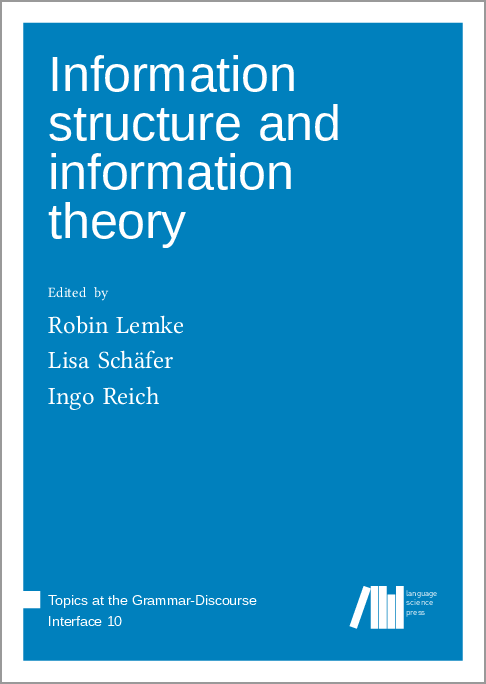We log anonymous usage statistics. Please read the privacy information for details.
Information structure and information theory
Synopsis
This volume results from the workshop "Discourse obligates – How and why discourse limits the way we express what we express" at the 44th Annual Meeting of the German Linguistic Society in Tübingen, Germany. The workshop brought - and this book brings - together information-structural and information-theoretic perspectives on optional variation between linguistic encodings. Previously, linguistic phenomena like linearization, the choice between syntactic constructions or the distribution of ellipsis have been investigated from an information-structural or information-theoretic perspective, but the relationship between these approaches remains underexplored.
The goal of this book is to look more in detail into how information structure and information theory contribute to explaining linguistic variation, to what extent they explain different encoding choices and whether they interact in doing so. Using experimental and corpus-based methods, the contributions investigate this on different languages, historical stages and levels of linguistic analysis.
Chapters
-
Information structure and information theoryA short introduction
-
The comprehension of broad focusProbing alternatives to verb phrases
-
An information-theoretic account of constituent order in the German middle field
-
Choosing referential expressions and their orderAccessibility or Uniform Information Density?
-
The role of information in modeling German intensifiers
-
Cleft sentences reduce information density in discourse
-
Tell me something I don’t knowSpeaker salience and style affect comprehenders’ expectations for informativity
-
Prosodic factors do not always suppress discourse or surprisal factors on word-final syllable duration in German polysyllabic words




